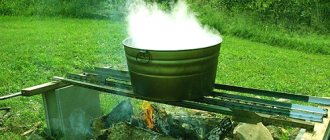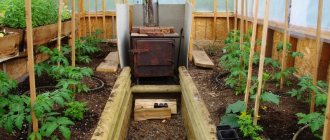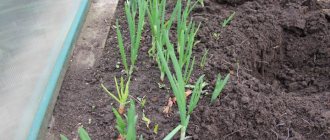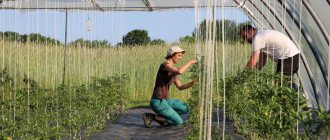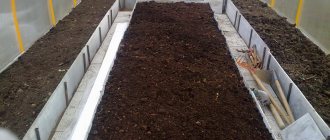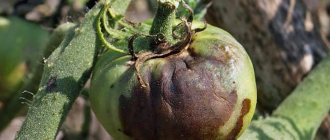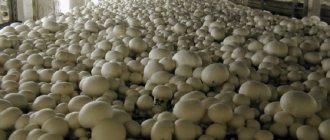This year's gardening season is already ending. To get a good harvest next year now, in September, you will have to try a little, without postponing this task until spring. Preparing the greenhouse for winter will take some time, but next year you will have healthy fertilized soil, a bright indoor garden and a rich harvest. Work in the greenhouse should begin immediately after all plants have been harvested. Where to start, what and how to do, preparing it for the next season?
Why do you need to prepare a greenhouse for winter?
After harvesting, it is necessary not only to remove plant debris from the greenhouse, but also to carry out other measures. Before we tell you how to prepare a polycarbonate greenhouse with a double arc for winter, let's look at why this is necessary:
- The microclimate inside the greenhouse is favorable not only for plants, but also for pathogens that can remain in the soil from diseased plantings. To prevent infection of plants planted in spring, autumn treatment is carried out.
- Not only the soil can carry infections, but also the elements of the structure, on the surface of which pathogenic spores can continue to live for 1-2 years. Therefore, the greenhouse needs disinfection.
- Despite the high strength of polycarbonate, some manufacturers note that in winter it is necessary to use additional supports to strengthen the greenhouse.
- Vegetable crops gradually deplete the soil, even if you feed them regularly. For this reason, it is advisable to replace the top layer of soil in the fall, and completely change the soil every 4-5 years. The best option is to move the greenhouse to a new location (if possible).
- Conducting preparations in the fall allows you to save time in the spring. The time saved can be devoted to preparing seedlings.
Soil renewal
Over time, there is an imbalance of nutrients in the greenhouse soil. It becomes depleted, and the plants begin to bear fruit worse. In order to have a productive vegetable garden, the greenhouse and the soil in it are prepared for winter. After all, an excess of fungicides and insecticides, high temperature and humidity in greenhouses, as well as the accumulation of phytopathogenic microorganisms provoke the appearance of various diseases.
Growing vegetables in such conditions will become increasingly difficult. The old layer loses its nutritional properties, becomes dense and does not allow moisture to pass through well.
To restore soil fertility and improve its composition, it is recommended to remove the old layer by about 10-15 cm every 3-4 years. This reduces the likelihood of the development of pathogenic microflora and has a positive effect on crop rotation. Used soil from the greenhouse is transported off-site if it is heavily infested with pests.
Instead of the old substrate, you can haul soil from the garden, but it is better to collect a nutrient mixture of peat, compost and river sand - all components are taken in the same ratio. Adding wood ash (at the rate of 200 g per 1 m2) also improves the quality of the soil.
Autumn processing of greenhouse beds
You need to start by cleaning the beds. In a greenhouse in the fall, the soil is cleared of plant residues. If there are even small fragments of tomato tops or roots, they need to be removed. Otherwise, they can cause infections in plants. Therefore, your task is to remove everything, even the mulch. The greenhouse is also freed from pins and supports. In the case of a film construction, you need to remove the film, which is washed, dried and folded for storage.
It is not recommended to put plant remains in compost, because in such conditions bacteria and pests can multiply in the area.
Reviews
I usually have glass greenhouses on my property, but it’s hot in them in the summer - I don’t have the strength, and the leaves were fried under the sun, as if they were burning under a magnifying glass. Polycarbonate is probably better. I read about the quality and decided that I should buy it.
Vladimir, Ulyanovsk
I always remove old plants in the fall. I would like to give gardeners advice: never throw old tops into the compost. This is how you can get infected! Suddenly there are pests in the tops...
Olga, Vologda
What kind of supports are best? Wooden, or what? So, probably, their top should be wider than their bottom. Otherwise they won't be able to withstand the snow.
Nikita, Ekaterinburg
I always use store-bought soil. It’s very convenient, it’s already completely ready. Just plant!
Alina, Krasnoufimsk
Is it possible to do without a sulfur bomb? It's probably enough to just rinse with potassium permanganate. All the pests will die from the cold anyway...
Evgeniya, Petushki
My grandfather also used sulfur smoke, and my father and I follow their advice. It seems to me that this is the surest remedy.
Andrey, Krasnoufimsk
Autumn chores and work in the greenhouse will be worth it. If you keep it in good condition, it will last for many years. The main thing is to prepare the house for the plants in time for wintering.
Health to you and your loved ones! Natalya Belokopytova.
The first stage is general cleaning
As part of general cleaning, in addition to removing plant debris, you need to thoroughly wash the walls of the greenhouse inside and out. It is important to note that different detergents are used for different materials:
- Saturated soap solution.
- Potassium permanganate solution (weak).
- Vinegar-based composition (per bucket of water - 100 grams of laundry soap and 1 teaspoon of vinegar essence).
- A solution based on mustard powder.
- Soda-based solution (2 tablespoons of baking soda per bucket of water).
Often, a soap solution is used for this, which is easy to prepare, safe, and accessible. Sponges are used to clean walls and mops are used to clean ceilings. It is important to remove dust, cobwebs or even wasp nests in the corners.
After washing with the solution, the remaining soap is washed off using running water from a hose under pressure.
Characteristics of polycarbonate coating
Greenhouse structures made of polycarbonate have gained popularity and are widely used in gardens and summer cottages. Currently, greenhouses made of polycarbonate are considered the best for growing early crops. They are characterized by the following advantages:
- They retain heat well and transmit light.
- The uniqueness of polycarbonate lies in its ability to scatter and repeatedly reflect sunlight in different directions.
- Thanks to the scattered rays, plantings in such greenhouses receive more light than in glass ones, in which the rays are not refracted and do not change their directions.
- The outer side of the polycarbonate is covered with a film that protects against harmful ultraviolet radiation.
- The material is very durable, resistant to adverse weather conditions and mechanical shocks.
Interesting!
The coating has very few disadvantages. Polycarbonate is susceptible to scratches and abrasions, due to which its light transmittance is lost. Due to changes in air temperature, the material contracts or expands, which complicates the installation of the structure.
The second stage - removing the soil
Next, we will tell you how to prepare the soil in a greenhouse for the winter. Replacing soil is a labor-intensive undertaking. 15 centimeters of the top layer must be changed every year. The waste soil can be used in the garden, in the flower garden, in the garden bed. It must first be shed with a saturated solution of potassium permanganate.
Next, the beds need to be filled with new soil to create a fertile layer. It's a difficult job. You can buy soil at a garden store or prepare it yourself. The option of buying soil is simpler, but at the same time insidious. Often, gardeners are faced with situations where, under the guise of black soil, they are sold waste soil that was previously used in an industrial greenhouse. Preparing the soil yourself requires a lot of time and labor. However, here you don’t have to worry about the plants.
How to prepare the soil in a greenhouse for winter using self-produced soil:
- Gardeners with extensive experience specially lay compost heaps every year. Compost is an excellent solution for using with soil for greenhouse beds. Lake or river sand and high-moor peat are also used.
- When filling the beds, you need to lightly compact the soil. This will prevent the formation of voids. To cover the beds, you can use dry, clean straw (a layer of about 5 cm). Subsequently, snow is thrown onto it, distributed over the usable area of the greenhouse.
- In spring, the snow will melt and the beds will fill with water. Cold-resistant crops can be sown early, as soon as the soil thaws to a depth of about 15 cm. In this case, the air temperature should exceed 15 degrees.
How to prepare a greenhouse in the fall if the harvest was spoiled by pests
First, spill the soil with hot water, and then use the preparations. In this case, you need to spray both the soil and the structure itself.
Different insecticides are used to control each pest:
- Nematode. Treat it with Carbation, Chloropicrin, Nemagon.
- Aphids are afraid of drugs such as Kinmiks, Iskra, Karate, Bitoxibacillin, Fitoverm, and sulfur bomb.
- Whiteflies can be removed with Fitoverm, Confidor, and Aktara.
- The Putin tick does not tolerate Fitoverm, Aktofit, Vertimek, or sulfur bomb.
- Mole crickets, wireworms, and cockchafer larvae will die from Medvetox, Zemlin, Rubit, Rofatox, and sulfur bombs.
For late blight, soil treatment with the following preparations will be useful: Hom, Abiga-Pik, Consento, Revus, Fitosporin-M, 3% Bordeaux mixture.
The drugs Topaz, Gamair, Quadris, Tiovit Jet, Fitosporin-M will get rid of powdery mildew.
Against brown spot, use Hom, Fitosporin-M, Pseudobacterin-2, Polyram, 3% Bordeaux mixture.
Trichodermin, Baktofit, Gamair, Pseudobacterin-2, Planriz will get rid of root rot.
For fusarium - Oxychom, Trichofit, Gamair, Energy, Previkur.
The third stage – disinfection
If replacing the soil is too complicated an undertaking for you, then you can limit yourself to processing it:
- You need to dig up the ground with the bayonet of a shovel.
- Sprinkle hot water evenly over the entire area of the greenhouse. Per square meter you will need approximately 10 liters of water.
- Next, the earth is covered with film and left for several days.
If the vegetable was sick in the summer, you need to dilute 10 grams of potassium permanganate in a bucket, heat the mixture to 60 degrees and evenly pour it over the soil. As a rule, one such treatment will be needed to disinfect the soil.
For areas where tomatoes grew, treatment with a solution of copper sulfate is used. To prepare it you will need 50 grams of copper sulfate, which dissolves in a bucket of water. The soil is first loosened and then treated with a solution at the rate of 1 liter per square meter. After processing, the land is dug up and treated with Alirin, Baikal, Fitosporin or Trichodermin.
Video - How to disinfect a greenhouse
We recommend watching the video in which you will get all the answers to the question of how to prepare a carbonate greenhouse for winter and what points need to be taken into account.
https://www.youtube.com/watch?v=GA0zjReSkVI
Processing of greenhouse structures and covering material
Disinfection of the structure can be carried out using different methods, depending on the material from which the greenhouse is constructed. In any case, in addition to pre-treatment with sulfur, separate disinfection of the frame and all covering material is required. Any permanent coverings that you leave to winter on the frame, as well as any removable coverings that are removed for storage, require mandatory disinfection.
Frame processing
Greenhouses are constructed using metal, wood and PVC frames. It must be remembered that sulfur treatment is not suitable for metal frames, since sulfur corrodes the metal.
How to prepare a greenhouse for winter, what to treat depending on the material of construction:
- Metal. For washing, use boiling water with the addition of vinegar. To prepare the composition you will need approximately 50 ml. vinegar per 1 liter of boiling water.
- PVC. Vinegar solution can also be used to treat polyvinyl chloride structures, but its temperature should not exceed 60 degrees.
- Tree. The optimal solution is to treat the wooden structure with copper sulfate. In this case, the concentration of the solution should not exceed 10%.
Coating processing
In this matter, everything also depends on what materials the structure is constructed from. We recommend watching a video on how to prepare a greenhouse for winter, which explains how to process coatings.
Film and glass
If the greenhouse is glazed or covered with film, then a solution of laundry soap heated to a temperature above 40 degrees is used to treat the coating. To prepare the composition, you need to completely dissolve soap without impurities (100 g) in boiling water. Next, the solution is mixed and cooled. Treatment is carried out using a brush (outside and inside).
Polycarbonate
To process polycarbonate, not active alkali is used, but a hot and intense solution of potassium permanganate. In this case, you need to not just pour the coating, but treat every centimeter of the surface (including in the corners and under the ceiling). On the outside, simply pour the solution over the surface. After carrying out the work, you need to open the doors, ventilate and dry the room well.
Removable film covering
Reusable film is also processed using potassium permanganate, dried and sent for storage. To ensure effective storage, the material is placed in a sealed bag.
How to clean a greenhouse cover
A lot of the necessary work has already been done, but what remains is to clean and disinfect the covering, that is, the film itself. It is removed from the frame and unfolded in the yard, washed off well with a hose and cleaned with soapy water. Then again treatment with strong pressure of clean water and spraying with copper sulfate. Afterwards, you need to thoroughly dry the film, carefully roll it up and store it in a dry and dark place until spring.
If the greenhouse has glass, there will be a little more work. You need to thoroughly rinse the glass, frames and joints with a stiff brush and using strong pressure of clean water. Then, cleaning will need to be done using a soap solution and the same hard brush. Next, the greenhouse is rinsed and dried again, all cracks and joints in it are properly sealed.
Cleaning work should be carried out correctly both outside and inside. The most correct way to clean a glass greenhouse is to clean it with soapy water and soap, and only then fumigate it.
Strengthening the frame
Even if the frame seems reliable to you, before winter the entire structure is tested for strength. Heavy snowfall can damage the greenhouse. To protect the greenhouse from such damage, it is strengthened with supports. If the greenhouse is 6 meters long, then approximately 3-4 metal or wooden supports are installed in such a structure.
Growth mirrorInstallation of a lawn watering system
- Lawn laying
In winter, the greenhouse needs to be cleared of snow several times so that snow caps do not lie on it.
Top dressing
Tomatoes, cucumbers, eggplants, peppers and other greenhouse crops prefer to grow in a loose and fertile substrate.
To replenish the supply of nutrients for the next year, in the fall the soil is enriched with organic fertilizers - manure or compost (at the rate of 1 bucket of manure per 1 m2).
It will burn out over the winter and will not harm young seedlings.
Universal fertilizers also include neutralized peat and rotted sawdust. Among the budget options for autumn feeding, it is worth highlighting bone meal, magnesium, chalk, ash, lime and phosphorus-potassium mixture. These products help to “build up” the fertile layer before the cold weather.



